In This Topic
Step 1: Assess the key characteristics
Examine the peaks and spread of the distribution. Assess how the sample size may affect the appearance of the dotplot.
Peaks and spread
Identify the peaks, which are the bins that have the most dots. The peaks represent the most common values in the sample. Assess the spread of your sample to understand how much your data varies.
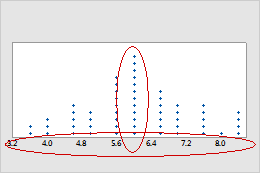
Investigate any surprising or undesirable characteristics on the dotplot. For example, the dotplot of customer wait times showed spread that is wider than expected. An investigation revealed that a software update to the computers caused instability and delays in customer wait times.
Sample size (n)
The sample size can affect the appearance of the graph.
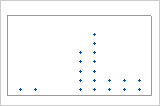
n = 20
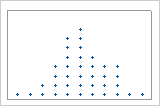
n = 100
A dotplot is best when the sample size is less than approximately 50. If the sample size is 50 or greater, a dot may represent more than one observation. Consider using a boxplot or a histogram in addition to the dotplot so that you can more easily identify primary characteristics of the distribution.
Step 2: Look for indicators of nonnormal or unusual data
Skewed data and multi-modal data indicate that data may be nonnormal. Outliers may indicate other conditions in your data.
Skewed data
When data are skewed, the majority of the data are located on the high or low side of the graph. Skewness indicates that the data may not be normally distributed. Often, skewness is easiest to detect with a histogram or a boxplot.
These dotplots illustrate skewed data. The dotplot with right-skewed data shows wait times. Most of the wait times are relatively short, and only a few wait times are long. The dotplot with left-skewed data shows failure time data. A few items fail immediately and many more items fail later.
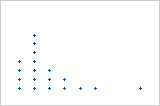
Right-skewed
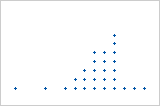
Left-skewed
If you know that your data are not naturally skewed, investigate possible causes. If you want to analyze severely skewed data, read the data considerations topic for the analysis to make sure that you can use data that are not normal.
Outliers
Outliers, which are data values that are far away from other data values, can strongly affect your results. Often, outliers are easiest to identify on a boxplot.
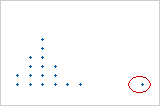
Tip
Hold the pointer over the outlier to identify the data point.
Try to identify the cause of any outliers. Correct any data entry or measurement errors. Consider removing data values that are associated with abnormal, one-time events (special causes). Then, repeat the analysis.
Multi-modal data
Multi-modal data have more than one peak. (A peak represents the mode of a set of data.) Multi-modal data usually occur when the data are collected from more than one process or condition, such as at more than one temperature.
For example, these dotplots are graphs of the same data. The simple dotplot has two peaks, but it is not clear what the peaks mean. The dotplot with groups shows that the peaks correspond to two groups.
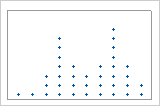
Simple
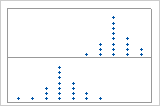
With groups
If you have additional information that allows you to classify the observations into groups, you can create a group variable with this information. Then, you can create the graph with groups to determine whether the group variable accounts for the peaks in the data.
Tip
To add a group variable to an existing graph, double-click a data representation in the graph and then click the Groups tab.
Step 3: Assess and compare groups
If your dotplot has groups, assess and compare the center and spread of groups.
Centers
Look for differences between the centers of the groups.
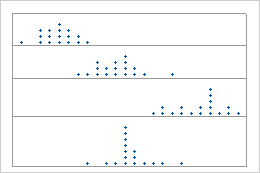
Paneled dotplots
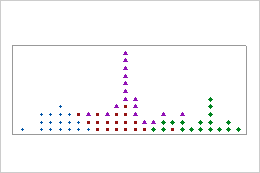
Stacked dotplots
- Use a 2-sample t test if you have only two groups.
- Use a one-way ANOVA if you have three or more groups.
Spreads
Look for differences between the spreads of the groups.
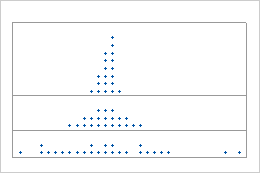
Paneled dotplots
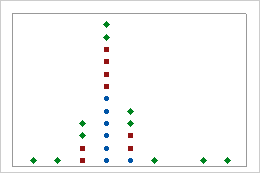
Stacked dotplots
- Use a 2 variances test if you have only two groups.
- Use a test for equal variances if you have three or more groups.
